Quick Summary
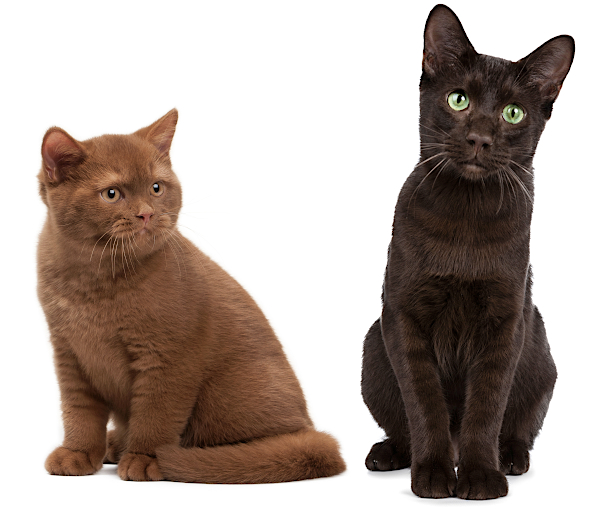
Click here for Price and Turnaround Time
Phenotype: Cats with brown gene variants have reduced eumelanin (black pigment) and appear brownish in color.
Mode of Inheritance: Autosomal recessive (order of dominance is B > b > bl)
Alleles: B = Wild-type black, b= Brown (chocolate), bl = Light brown (cinnamon)
Breeds appropriate for testing: Many breeds
Explanation of Results:
- Cats with B/B genotype will be full-colored and will not display chocolate or cinnamon coloration. They cannot produce chocolate or cinnamon offspring and cannot transmit these chocolate or cinnamon variants to any of their offspring.
- Cats with B/b genotype will be full-colored and are carriers of chocolate. They will transmit this chocolate variant to 50% of their offspring. Matings between two carriers of chocolate are predicted to produce 25% chocolate kittens.
- Cats with B/bl genotype will be full-colored and are carriers of cinnamon. They will transmit this cinnamon variant to 50% of their offspring. Matings between two carriers of cinnamon are predicted to produce 25% cinnamon kittens.
- Cats with b/b genotype will be chocolate and will transmit this chocolate variant to all of their offspring.
- Cats with b/bl genotype will be chocolate and are carriers of cinnamon. They will transmit this cinnamon variant to 50% of their offspring. Matings between two carriers of cinnamon are predicted to produce 25% cinnamon kittens.
- Cats with bl/bl genotype will be cinnamon and will transmit this cinnamon variant to all of their offspring.
Note: Overall appearance of the cat's coat also depends on expression of and complex interactions with other genes.
Cat Coat Color Panel
$57 per animal
Cat Coat Color + White Gloves (Birmans) Panel
$57 per animal
Bengal Coat Color Panel
$57 per animal
Birman Coat Color Panel (Bengal Coat Color + White Gloves)
$57 per animal
Cat DNA tests are carried out using cells brushed from your cat's cheeks and gums using household cotton swabs.
The cat DNA submission form with instructions and a place to tape the cotton swabs is sent to you via email after you place an order, and can be printed from your home computer. DNA test kits are no longer mailed.
Instructions
Step-By-Step:
1.
 Purchase regular household cotton swabs for cat DNA collection (the cotton swabs can be purchased at a pharmacy or drug store)
Purchase regular household cotton swabs for cat DNA collection (the cotton swabs can be purchased at a pharmacy or drug store)
2.
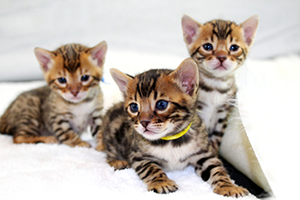
Make sure the cat has not had anything to eat or drink for at least 1 hour prior to collecting sample.
When swabbing kittens, isolate each kitten from the mother, littermates and any shared toys for 1 hour prior to swabbing. Kittens should not have nursed or eaten for 1 hour prior to collecting sample.
If collecting samples from more than one cat, make sure to sample one cat at a time and wash your hands before swabbing another cat.
3.
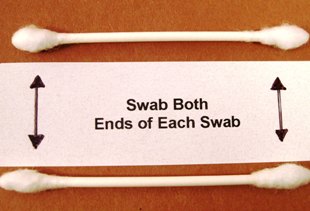 Use both ends of the two cotton swabs for a total of four swabs.
Use both ends of the two cotton swabs for a total of four swabs.
4.
Place the cotton head of the swab between the cat’s gums and cheek and rub or rotate the swab back and forth for 15 seconds. Repeat with each cotton swab head, for a total of 4 swabs. We recommend swabbing a different area of the gums with each swab head.
5.
Wave the swab in the air for 10-15 seconds to air dry it before attaching it to the submission form.
6.
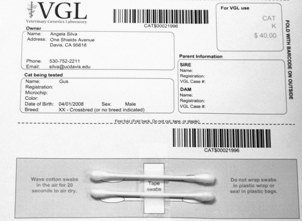 After swabbing the cheek and gums, tape the cotton swabs to the bar-coded submission form printed from your MyVGL account.
After swabbing the cheek and gums, tape the cotton swabs to the bar-coded submission form printed from your MyVGL account.
ATTENTION:
- Do not collect saliva/drool – the key to obtaining a good sample is getting cheek cells on the swab.
- Do not rub swab on the cat’s tongue or teeth – this will result in poor quality sample.
- Do not collect a sample from a kitten that has recently nursed – the mother’s genetic material can rub off on the kitten’s mouth and contaminate the sample.
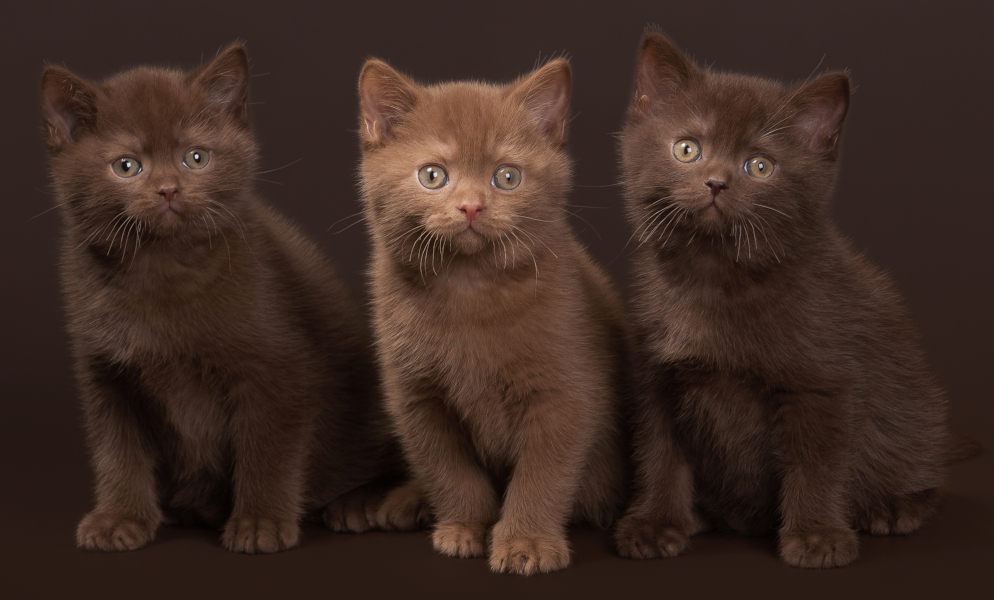
The tyrosinase-related protein-1 (TYRP1) gene affects the amount of black pigment (eumelanin) produced, and mutations in this gene are known to cause brown coat color phenotypes in many species of mammal. Research by Lyons Feline Genetics Laboratory at University of California, Davis identified two mutations in this gene that cause different variations of brown coat colors in cats. The darker shade of brown coat color referred to as chocolate/chestnut results from an intronic mutation that causes a splice variant (c.1261+5G>A) which results in a truncated protein. A lighter brown variant commonly called cinnamon/red is caused by a nonsense mutation (c.298T>C) that also results in an truncated protein.
The two variants form an allelic series that lead to these shades of brown. The wild-type B allele produces normal, black coloration (full production of eumelanin). The b allele produces the brown or chocolate phenotype and the bl allele produces a light brown or cinnamon phenotype. The order of dominance in this allelic series is B dominant to b, and b dominant to bl (B > b > bl).

 Brown (Chocolate and Cinnamon)
Brown (Chocolate and Cinnamon)